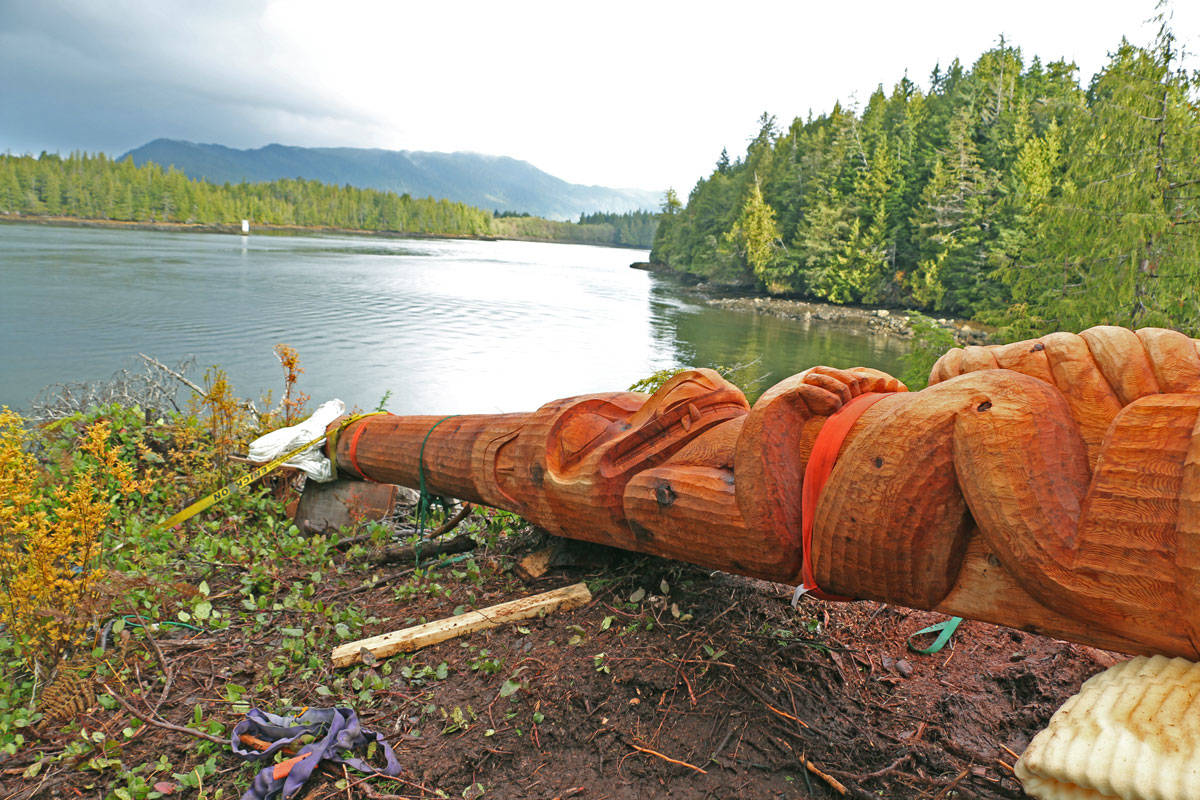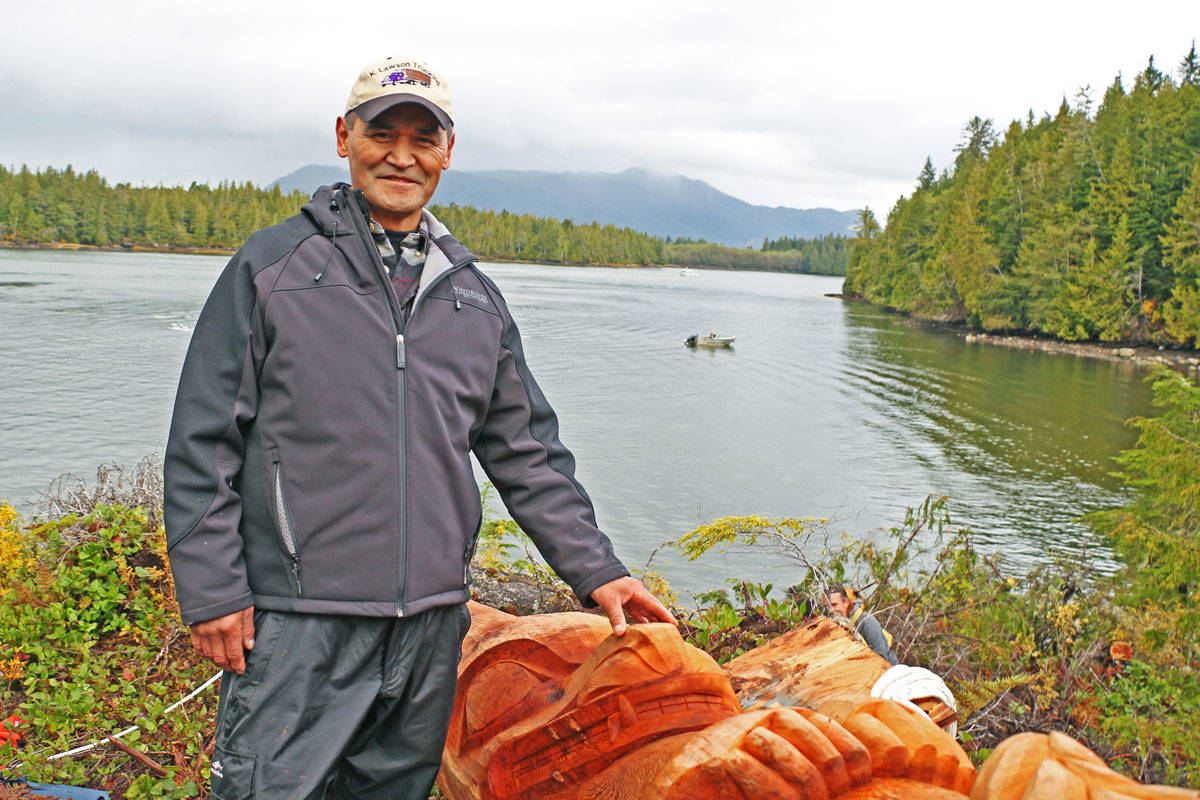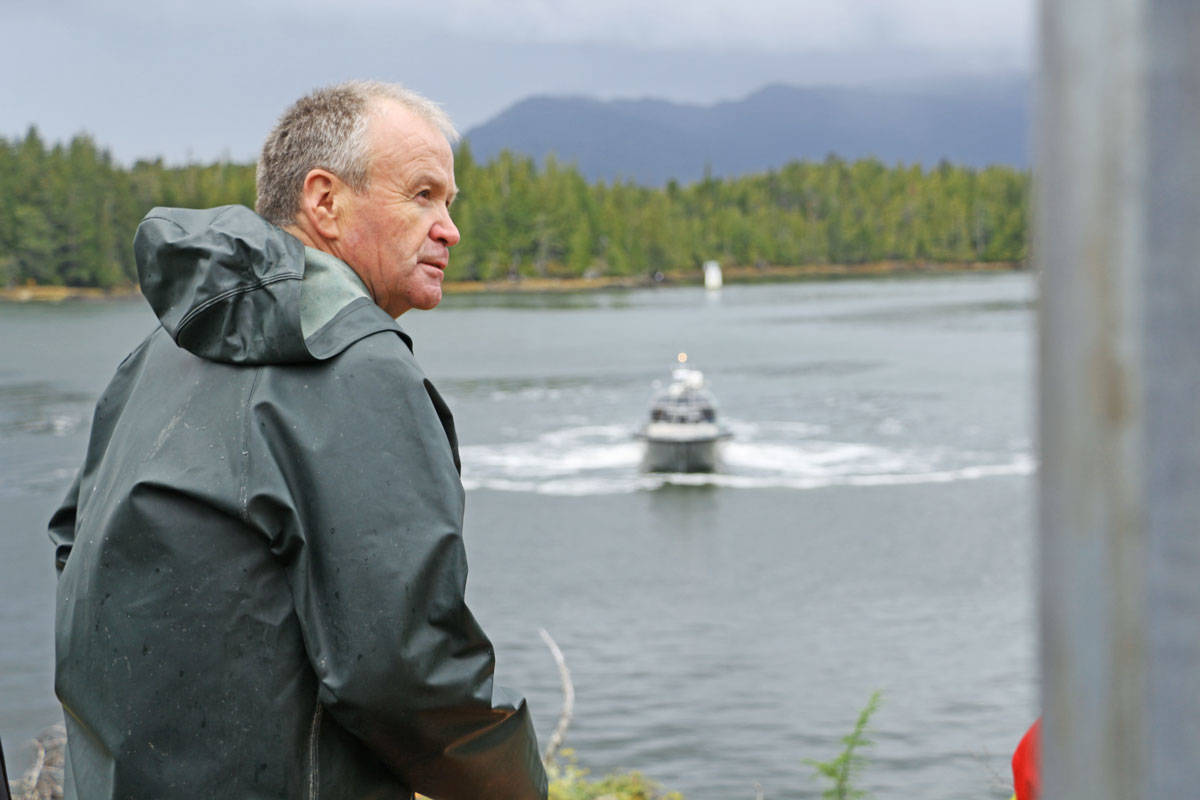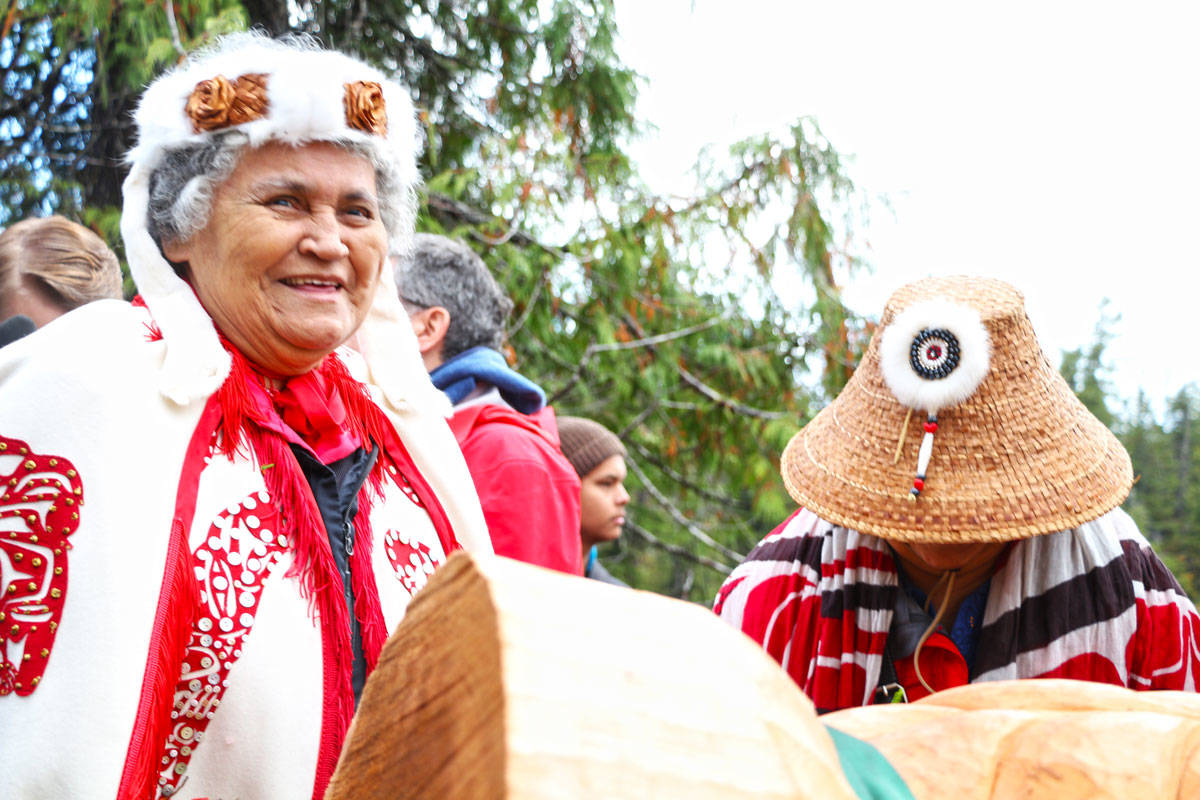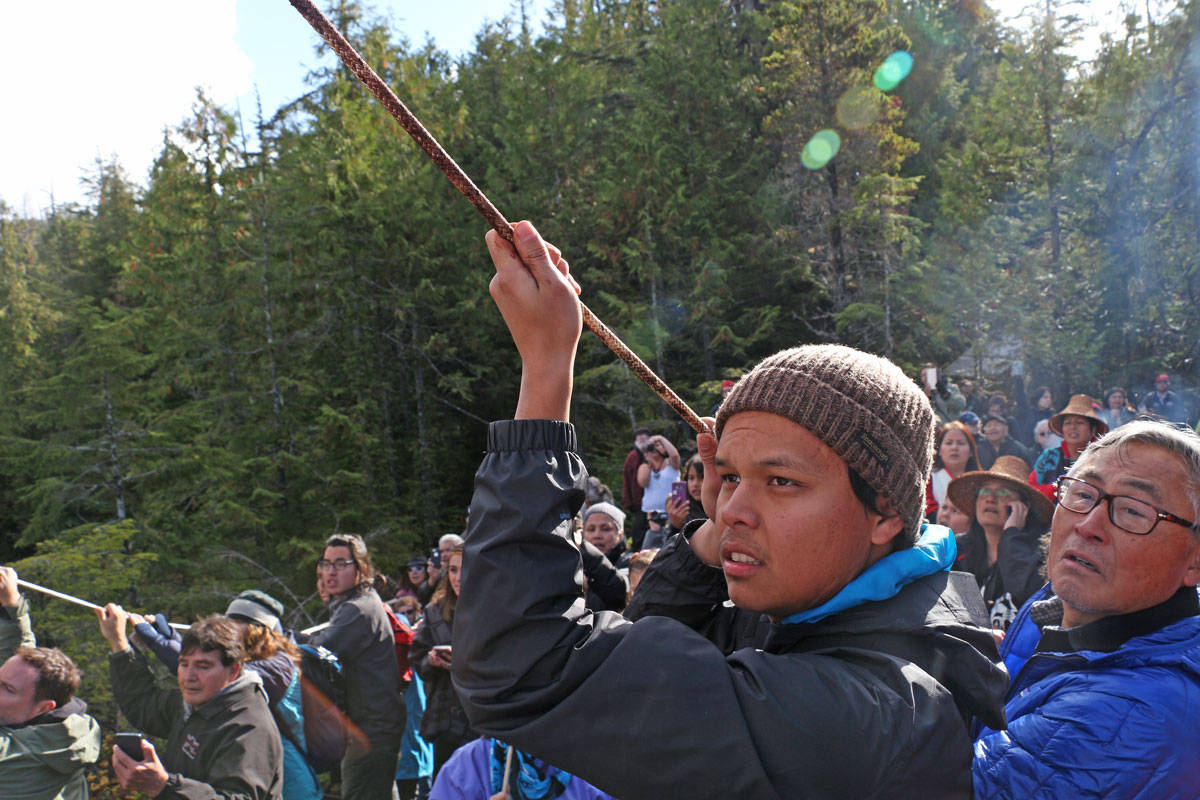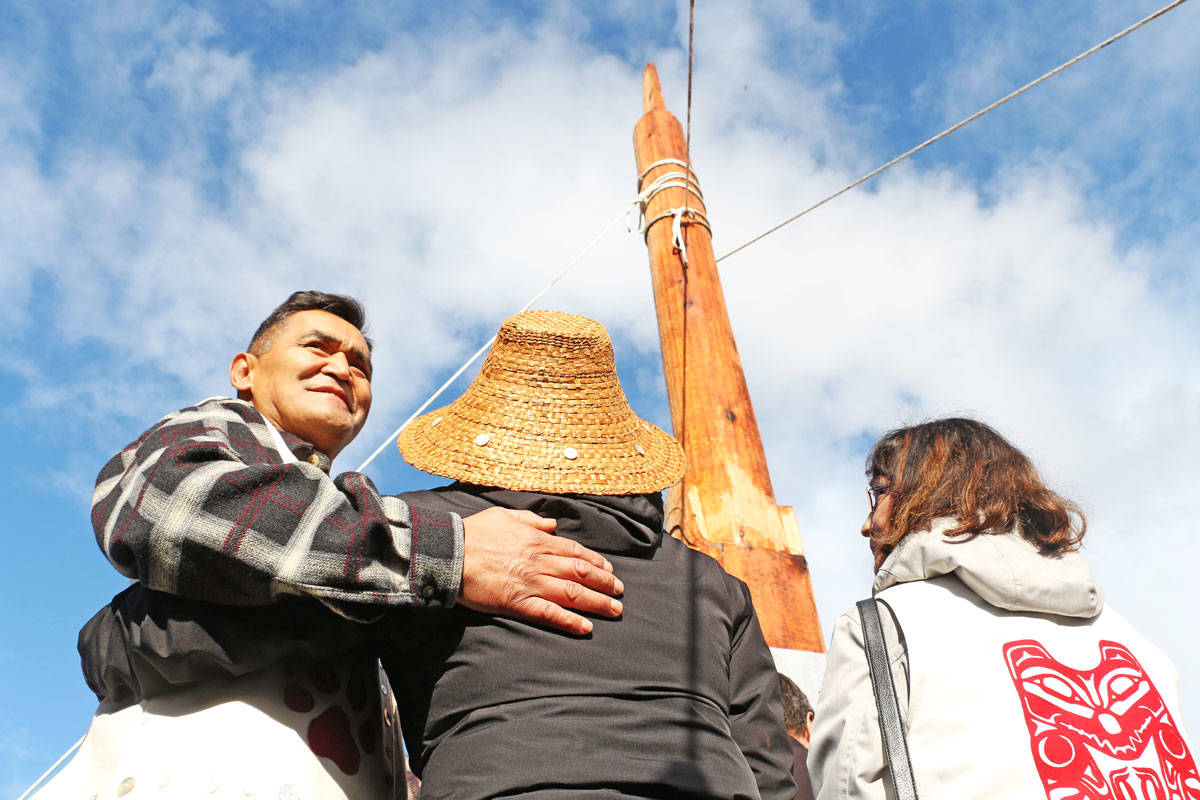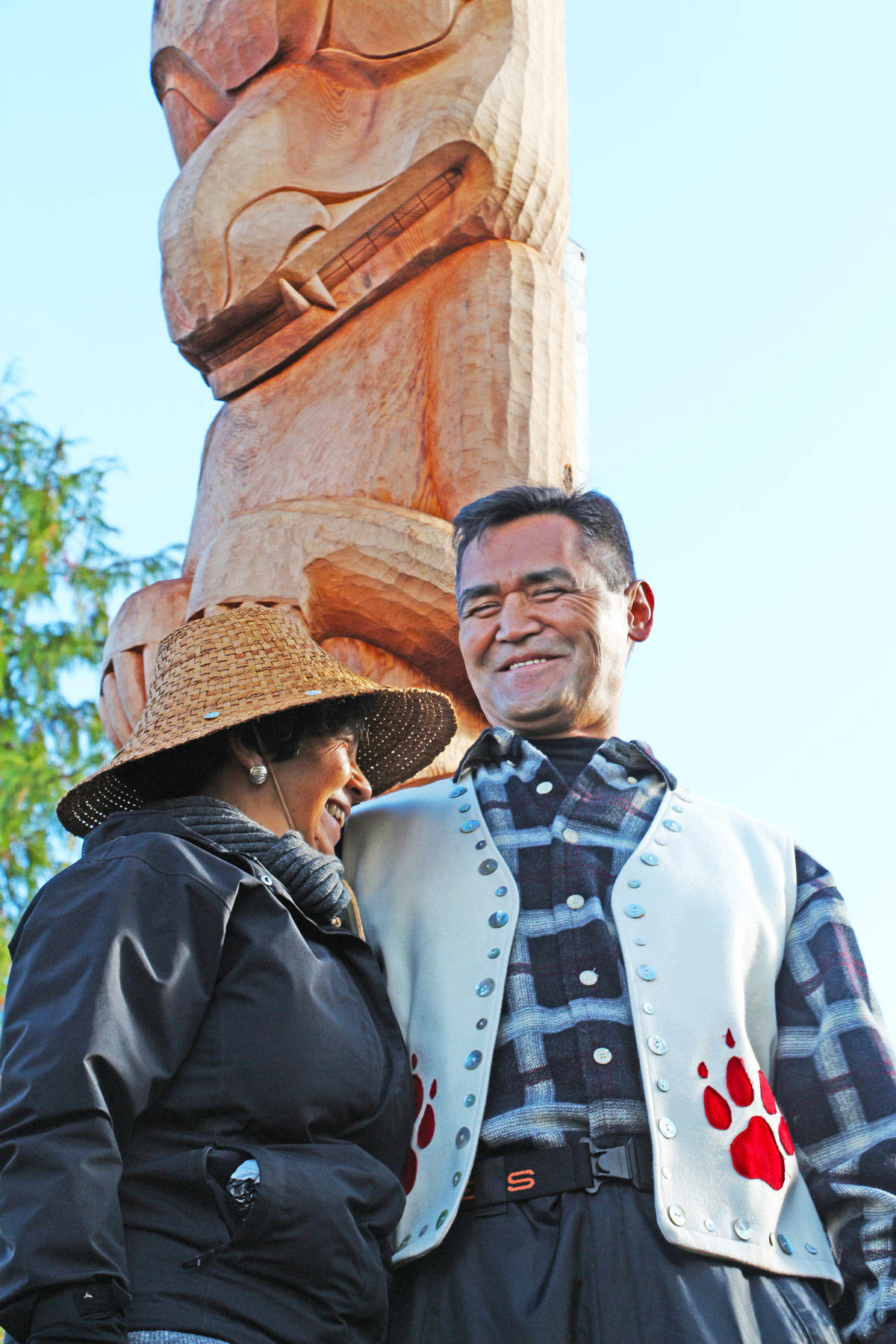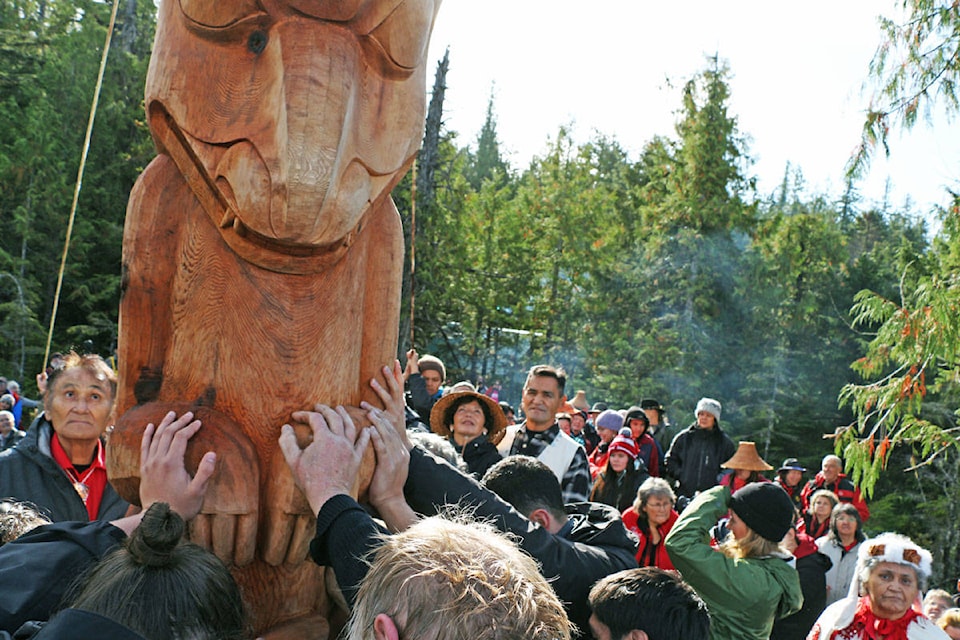In a stand of defiance against federal authorities, members of the Gitwilgyoots Tribe and supporters raised a totem pole on Lelu Island on Oct. 20 to signify their claim to the land.
The occupation of Lelu Island began in 2015 on the site where Petronas proposed to build a liquefied natural gas (LNG) terminal and it has continued even after the company abandoned its Pacific NorthWest LNG project in July.
People who either took part or supported the resistance movement came to witness the totem pole being raised on a mound overlooking where the sea meets the Skeena River.
RELATED: THE FOOTPRINT PACIFIC NORTHWEST LNG LEFT BEHIND
“It’s a historic event. It’s to signify who were are, where we come from, what we stand for and this is our territory. We’re marking our territory, we’re occupying our land as we have years ago,” said Ken Lawson, or Gwishawaal of wolf clan, a Gitwilgyoots house leader of one of nine allied tribes of the Lax Kw’alaams.
However, the territory they have claimed is federal Crown land. While a few boats transported approximately 100 people from Port Edward to the island, the Prince Rupert Port Authority (PRPA) patrol boat remained close.
“Lelu Island is federal land within the managerial jurisdiction of PRPA. In compliance with that responsibility, PRPA considers any activities conducted on Lelu Island without PRPA authorization as trespass. PRPA has not been asked for authorization, nor has PRPA granted authorization, for any construction on Lelu Island,” stated the port authority in an email.
Yet, people had come from all over to witness the event. There were members of Lax Kw’alaams, Metlakatla, Gitga’at and Gitxsan Nation, as well as non-Indigenous people who travelled from Montreal, Wyoming, California and New Mexico. They stood close together on a muddy knoll to watch the cedar pole with a wolf near the base carved by Tsimshian artist Phil Gray.
Vincent Sampare, youth inclusion program coordinator at the Friendship House, brought a group of Indigenous youths to share traditional knowledge of their culture. For many of them this was their first pole raising experience.
“We showed up when they were still carving it and some of the youth here actually helped with the carving so we made them follow through with the entire process,” Sampare said. “And it’s healing for them too.”
Desiree Bolton and her son drove from Terrace, and had supported the protest against building a LNG terminal on Lelu Island. “It’s pretty important because as First Nations we depend a lot on the land for our food sources and our medicines,” she said.
RELATED: TRIBE OR BAND, A JUDGE WILL DECIDE WHO REPRESENTS LELU
The concern many have with Lelu Island is the effect that a LNG terminal, or other industrial development, would have on the salmon habitat in the Flora Bank and surrounding the area. This was the reason Donald Wesley, or Yahaan, started the occupation on Lelu Island. He has been involved in a federal court battle to overturn the government’s decision to approve the now defunct Pacific NorthWest LNG project.
“It’s a very happy time for everybody of the Tsimshian Nation who were concerned about this. We’ll take this as a W, which is a win. This is a win not for myself and Yahaan, but a win for the nation and the people, not just the First Nations people but all the people of B.C. and Canada because we all use this resource. We all love the clean air, we all love the clean water, we did what we had to do,” Lawson said.
Since the first structures were built on Lelu Island two years ago, they have continued to develop on the land to mark their claim.
There are now two buildings, the totem pole and Lawson said they have many more plans, but there “has to be agreements” first.
RELATED: CASE DISMISSED OVER LELU ISLAND
shannon.lough@thenorthernview.com
Like us on Facebook and follow us on Twitter
